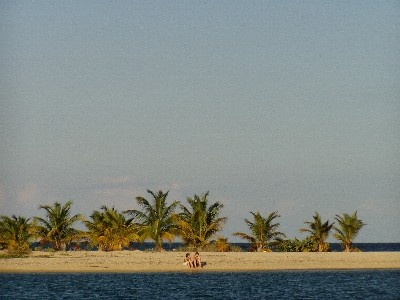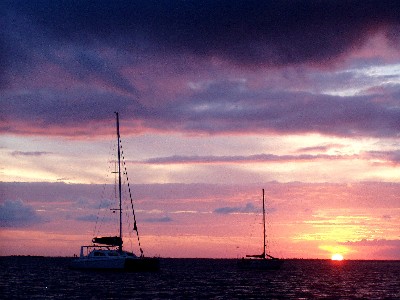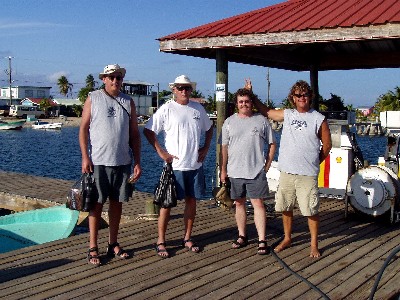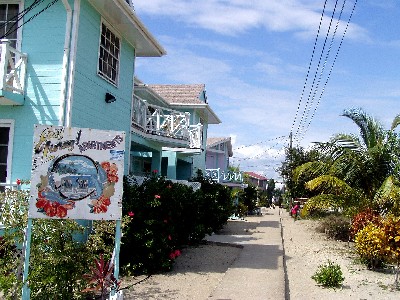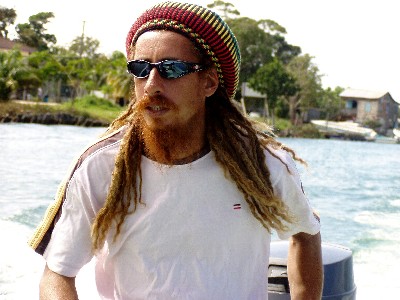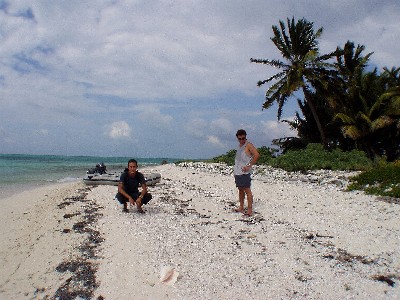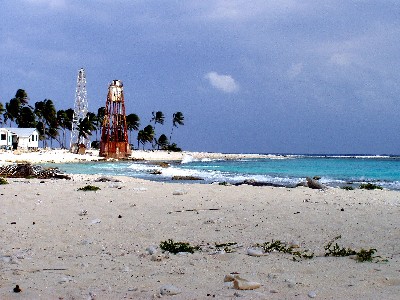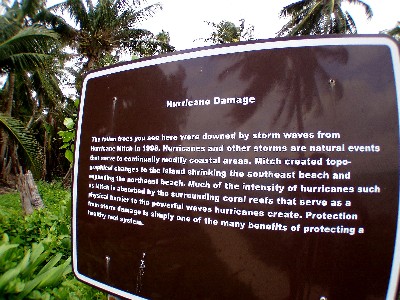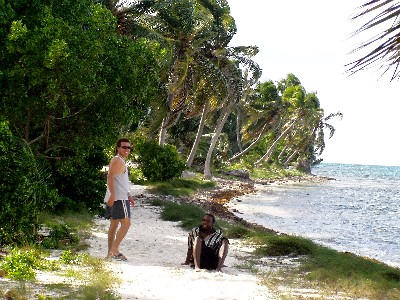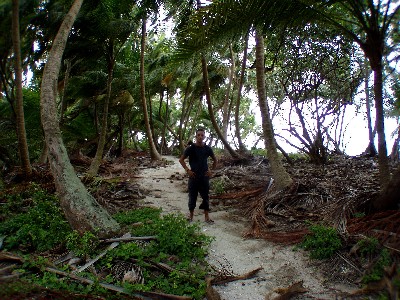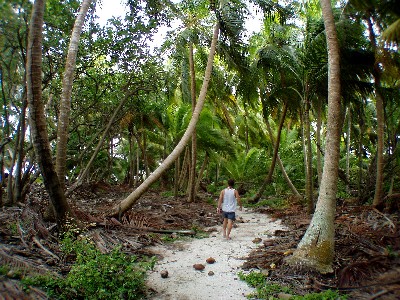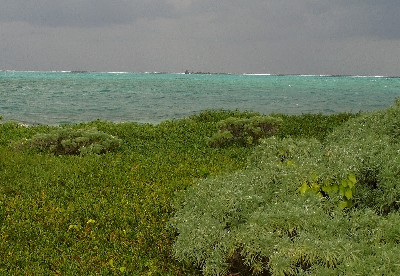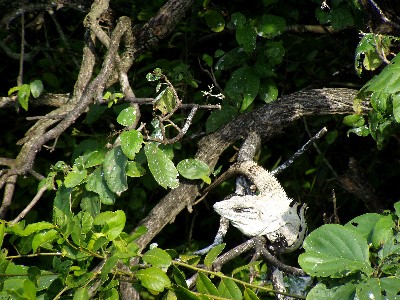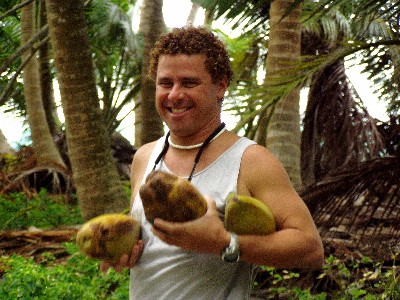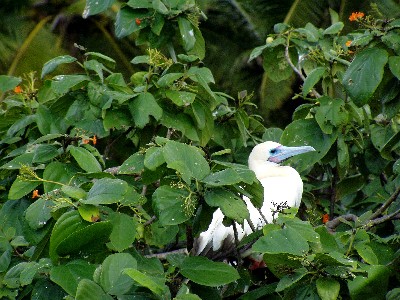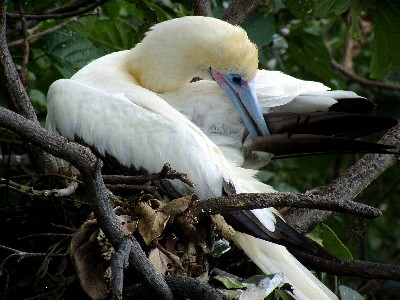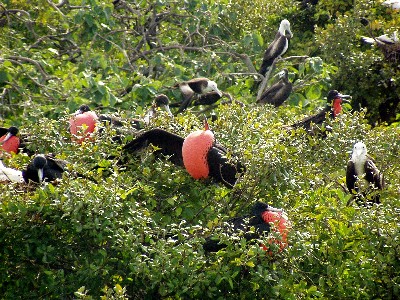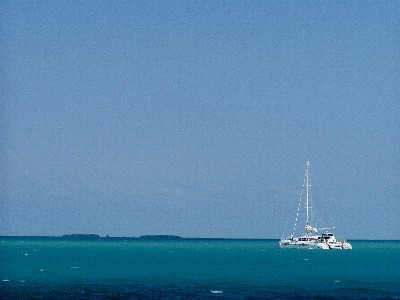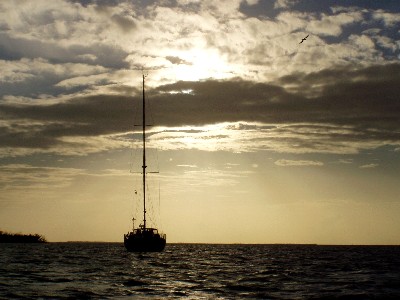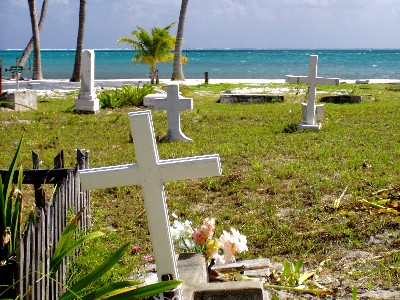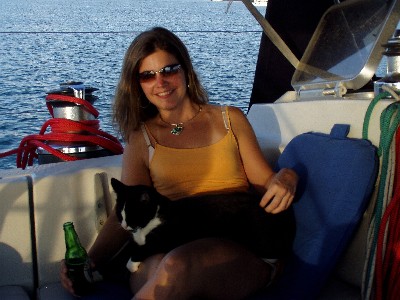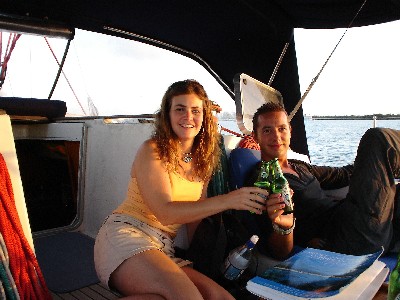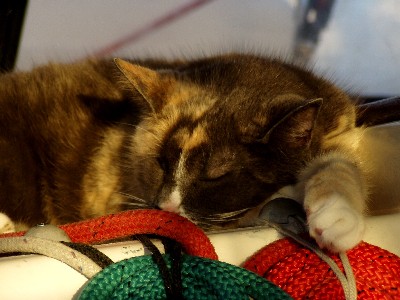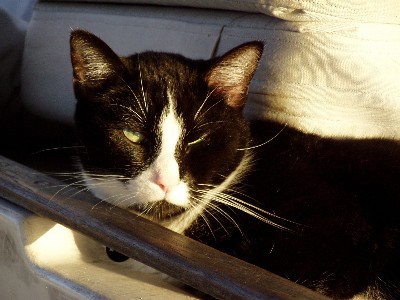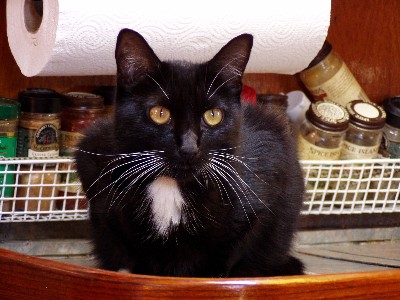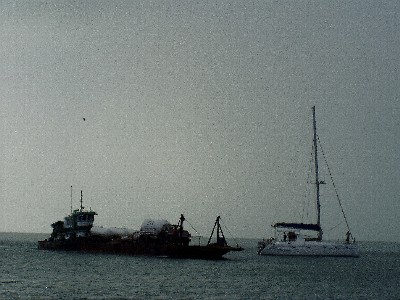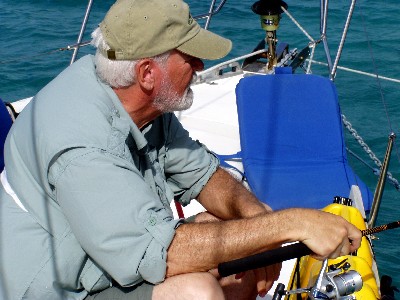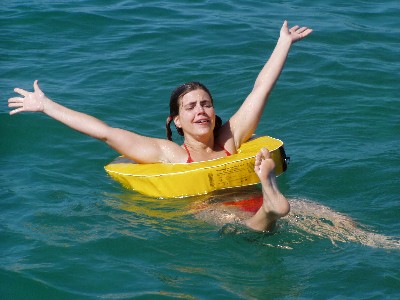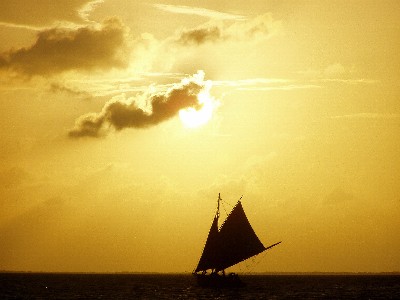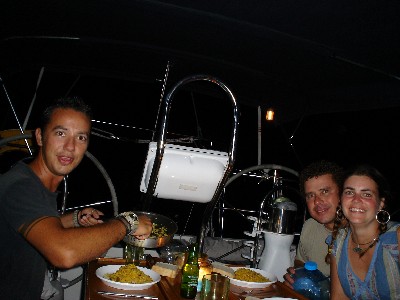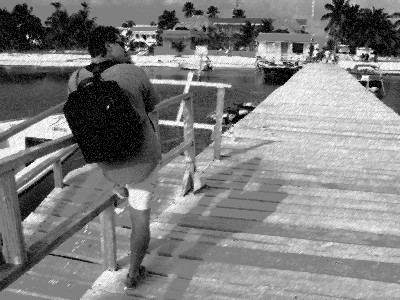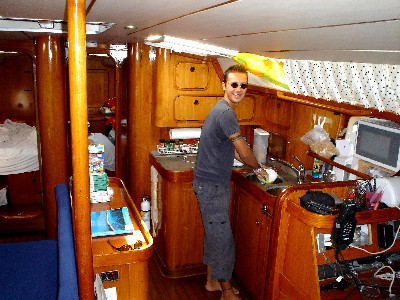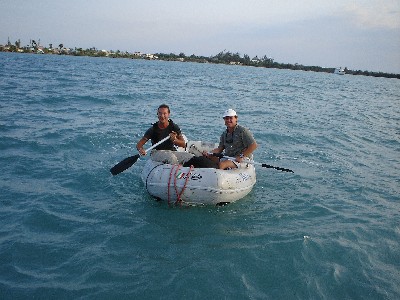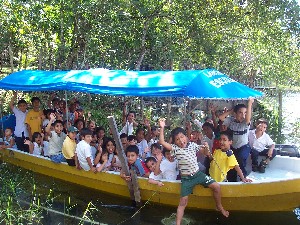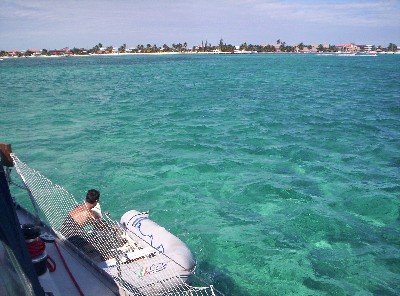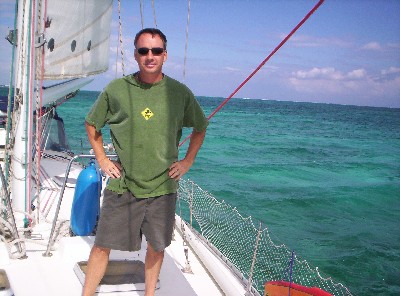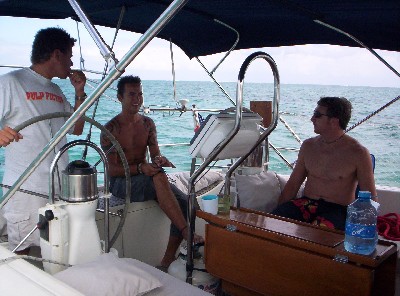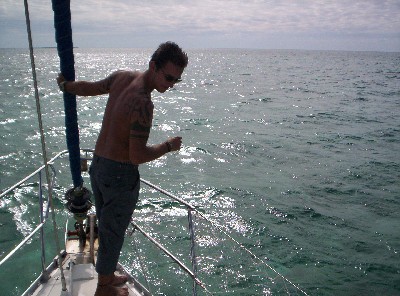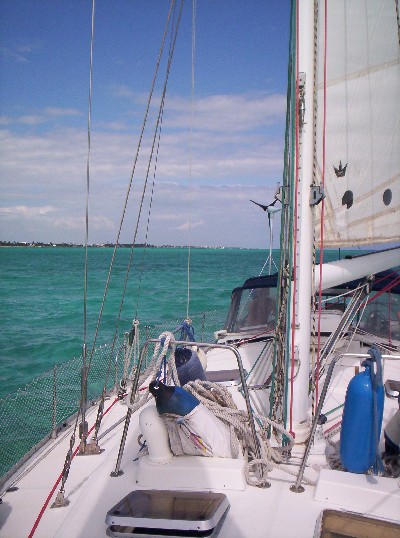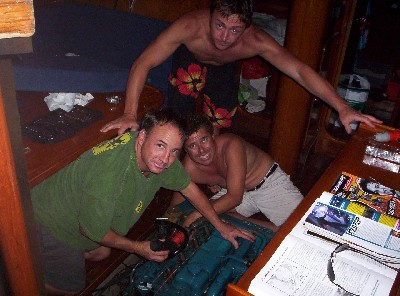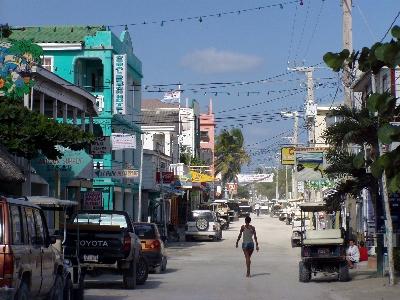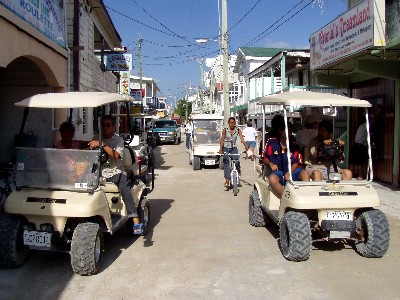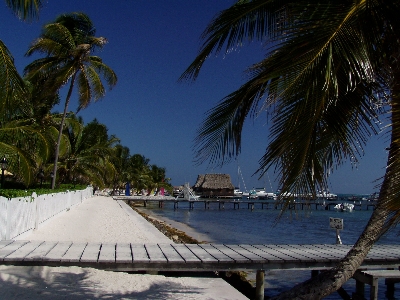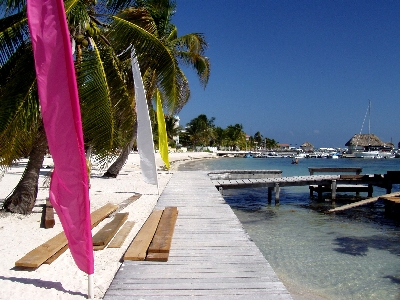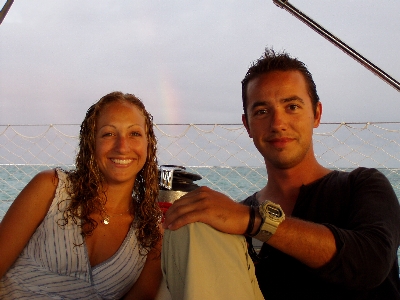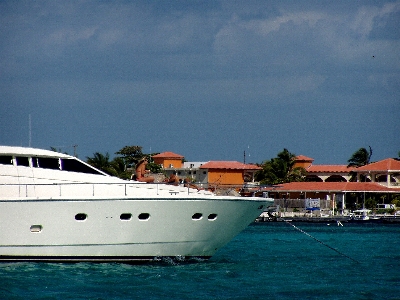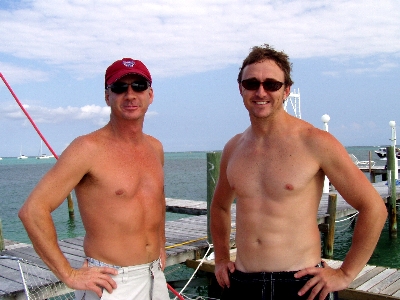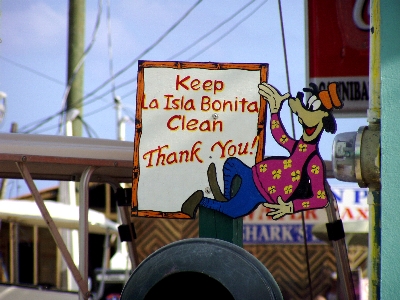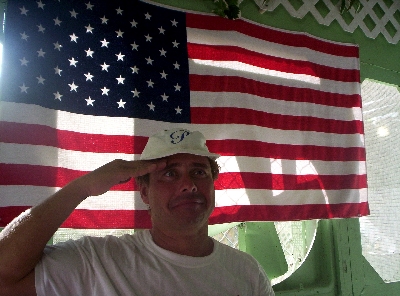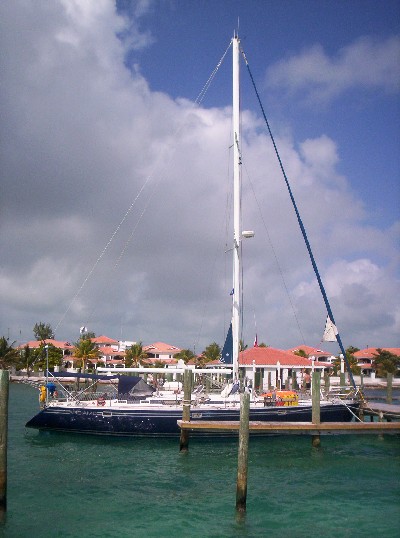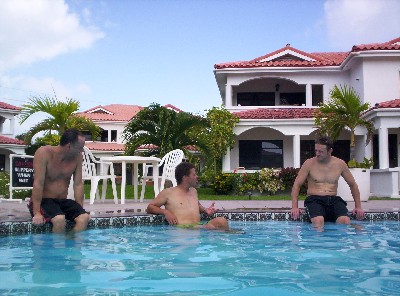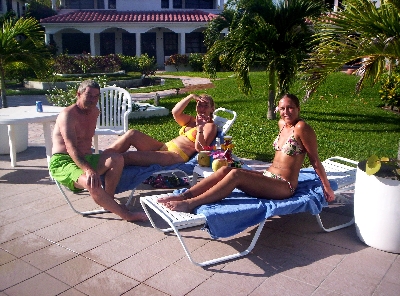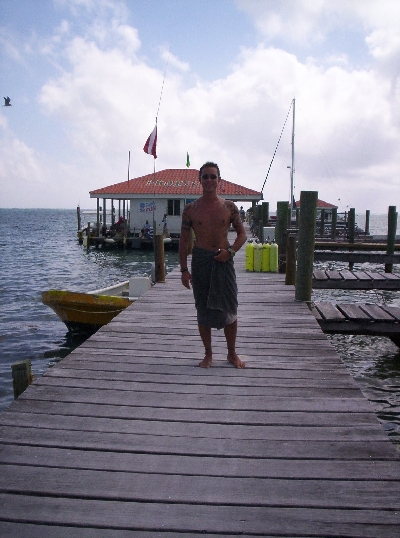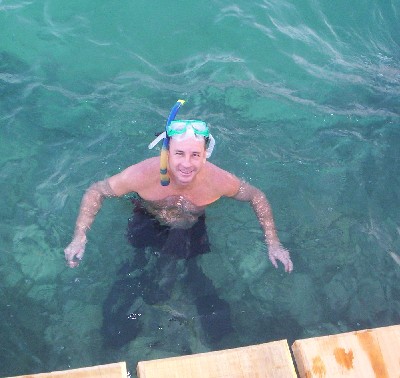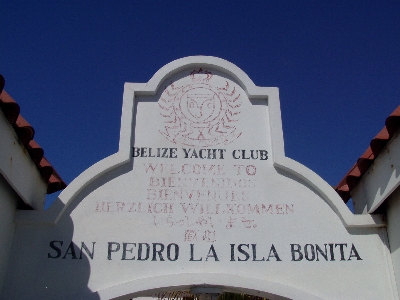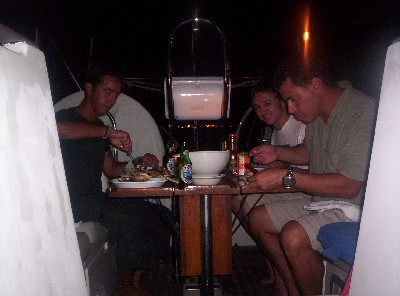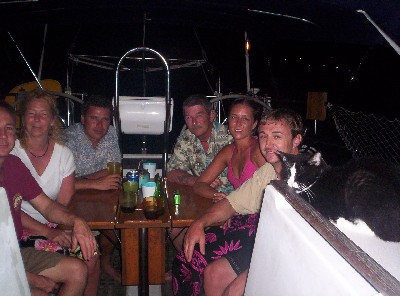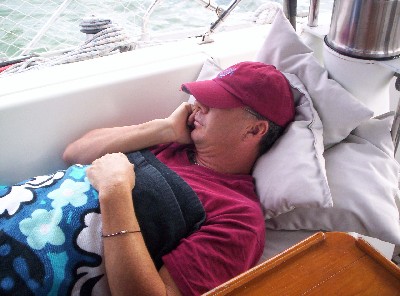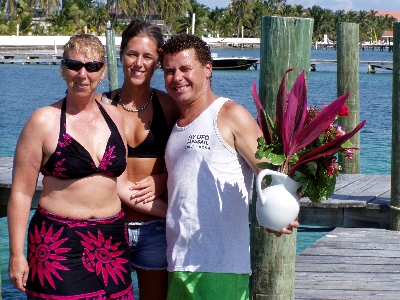After getting up the river, and getting Andiamo docked at the marina, we decided pretty quickly that it was time to do some exploring in this very fascinating country. Raf’s ex-girlfriend Teresa was flying in for 2 weeks a few days after our arrival, so we had to head over to Guatemala City to get her anyway, so we might as well put some inland exploring into the plan. Miet and Miriam, who ended up being guests onboard Andiamo for our first 3 days in Rio Dulce, were to head out on a sailing trip on a charter boat in Lago Izabal. We planned on meeting up with them again a few days later in Panajatchel, a town on Lake Atitlan, a spectacular lake that’s nestled within a few huge volcanoes.
Lisa, our guest from Ohio who hung out with us back in Belize, was also in Guatemala at the time we arrived. She was in Antigua taking Spanish language classes with another friend of hers from Ohio that same week (turned out she only actually did one day of classes, and blew off the rest of the week’s classes to go bopping around the area). So we made plans to meet up with her in Antigua after picking up Teresa in Guatemala City.
We picked up Teresa in Guatemala City without a hitch, managed to find a decent place to crash in Guatemala City (no small feat, so we hear) at a bed and breakfast run by Andrea, a 19 year old Guatemalan college student who speaks perfect English. She also offered us a ride to Antigua the next day, so it worked out great for us. By noon the next day, we were in Antigua. Antigua is a magnificent city that still shows its Spanish heritage in living color (photos to come soon). Yes, it’s a tad touristy, but you can forgive that in a place like this. There is much to see, and the people are wonderful and genuine. We did some sightseeing around town, though we chose to abstain from the museums and such. We were happy just hanging out and taking in the amazing scenery. We met up with Lisa the day we got there and spent most of the next couple of days with the four of us hanging out. The nightlife in Antigua was pretty lively, and we ended up having a great time checking out some of its better pubs and nightclubs.
We were due to catch a bus up to Panajatchel after that jaunt. Lisa was going to join us, but she ended up getting a little sick and decided to hang back in Antigua. We got to Panajatchel, which is also a very touristy town. It’s right on Lake Atitlan, which made it a great point of departure to all that the lake had to offer. We only had a couple of days at the lake, so we decided to head out to place called San Marcos. After meeting up with Miet and Miriam again, we all climbed aboard a water taxi to San Marcos.
San Marcos was a pretty interesting place. Extremely small and secluded. It’s frequented by the kind of “new age” tourists you normally see in Taos or Sedona. Lots of hippies hanging around, attracted by the seclusion and the very low cost of living. I found it interesting to see that most of the hippies were rather non-social and not really willing to strike up much of a conversation. But we got over it.
We stayed at a hippie-ish hostel that offered a four-bed dorm room to us, which totaled five, for a pretty cheap price. Sleeping arrangements worked out fine, nonetheless. Too bad the mattresses on the beds were akin to bags of mined rocks lying on wood slats. Sleeping on them was just plain painful. Lots of sore necks and backs after that night. We had a great time nonetheless with Miet and Miriam, and after one short day with them, we parted company to head back to Antigua. Miet will be in Antigua at least another few weeks with her family visiting her, so we’ll most certainly see her again before leaving Guatemala. Miriam was on her way to Costa Rica for at least 2 months, so there was probably a good chance that we’d see her somewhere too.
We were due to head back to Rio Dulce to do some sailing up the river and in Lago Izabal with Lisa. After some interesting logistical hijinks trying to meet back up with Lisa back in Antigua, we hopped on a van shuttle to Guatemala City. From there we grabbed a pullman bus from to Rio Dulce town, also called Frontreras. This was a bus ride from hell, let me tell ya. Most of the bus ride was as if we were driving on a rocky desert course. The bus must not have had its shock absorbers checked in a while. We were airborne at least half the time. To add spice to the trip, the driver chose to play bad latin pop music at its absolute highest volume possible for most of the trip, and the speakers were RIGHT over our heads. Lucky us. We were glad to get to Rio Dulce about 5 hours later.
After a day of rest and catchup at the marina, we shoved off with Andiamo to check out some more of the Rio Dulce and Lago Izabal, a huge lake that marks the inland end of Rio Dulce. We headed out with magnificent weather, good enough to do some sailing. The river’s scenery is still spectacular, even if there are no towering gorges and cliffs like there are on the other end of the river. The first interesting thing you see after passing Frontreras is Castillo San Felipe, a small Spanish fort built in the 1600’s to protect Spanish Galleons and other ships that would hide in Lago Izabal from pirates.
Essentially, any time a pirate ship attempted to enter Lago Izabal, cannons would be fired at it from the fort, and the pirates would not be able to enter. They further protected the entrance by running a large chain across the channel in front of it. The first thing you notice is the outstanding condition of the fort. (I found out later when we toured it that it was “restored” in 1955, but you can’t really tell what’s original and what’s not, so I guess that’s good.) Once you pass the fort, you’re pretty much in the lake, which is quite huge, about 30 miles long by 20 miles wide at its widest points.
We got to do some great sailing in the lake. We decided that we would work our way up to a place called Finca el Paraiso. It’s a gorgeous stretch of beach in a small bay on the lake. In that bay is a creek that leads up to an amazing waterfall and hot spring called Agua Caliente (which means “hot water”). We were going to anchor off that beach, and then dinghy in to check things out. On our approach in, I was told by a couple of cruisers back at the marina that I should pass a marker made up of three large pilings that marked a large rockpile in that area, and then start turning inward toward shore. I did just that, passed by the marker by some distance, and then started to turn in towards the beach. Then, we ended up right on the rockpile. It appears that the rockpile stretches out a lot farther out than I may have been led to believe. Oh boy.
I tried to turn Andiamo back towards where I knew the deep water was, to no avail. I was getting a bit concerned because it was fast becoming dark, and it’s not fun being stuck aground in the dead of night. After struggling with it for about 30 minutes, I noticed a small fishing cayuco coming our way. Onboard was Julio and Mario along with some of Mario’s kids. They saw that we had run aground and came over to help. Mario dove in and checked out the keel and said that we weren’t stuck too bad. I was relieved to hear that.
We essentially had to go backwards and away from the rocks to get freed. I decided that we were going to best get off by using an anchor and essentially winching ourselves off using one of our large sailing winches. I gave Julio and Mario our lightweight Fortress anchor and had them take it way out into the deep water, about 100 feet or so away. After they dropped it in, we made sure that the anchor had a good hold, moved the anchor line over to our port winch and started grinding away. We steadily made progress off the rocks. After one re-set of the anchor, and a little more grinding on the winch, we were free! Woo-hoo! Julio and Mario showed us then the RIGHT way to get close to the beach to anchor, and after accepting a token of our appreciation, they were on their way for the night. It was nice to have Andiamo freed up and safely at anchor. Note to self: I really need to stop running her aground, it’s getting a little old.
The rest of the night was uber-peaceful. The sky was crystal clear with no real ambient light on the ground to speak of, so we had a star show that I haven’t seen anything close to since our time in Punta Allen.
The next morning after breakfast, I decided it was time to do some swimming. See, you can’t really swim in the Rio Dulce over by where we docked Andiamo, because unfortunately all the towns and villages on the river dump their sewage right into the river. In Lago Izabal, however, that’s not so much a problem, so now was the time. It was nice to be swimming in fresh water for a change. After a good hour of playing in the water, we decided to head in to check out the Hot springs and waterfall. We paddled in the short distance to shore, and found our way up to where the Agua Caliente was. The people we asked for directions said that it was about a 15 minute walk up a dirt road, but it was really more like 30+ minutes. We finally made it to the entrance of the park. There was a small fee to get in, and then some more walking to be done, all the while having to get through gauntlets of cute little Maya girls who were trying to sell some banana pancake looking things. After saying no to the 10th or so kid, we decided that we should just break down and try the damn things. Too bad for us, they were pretty damn delicious and cheap to boot.
When we finally got to the falls, it was really something to see. The waterfall itself was about 30 or 40 feet high from where it met the river below. You can see the steam billowing from the water. It was amazing! There were about a dozen or so tourists swimming around the falls when we got there, but it didn’t look at all crowded or anything. Lisa and I were the first of our group to be in the water and swimming around. The water was so warm when we got in, and it just got warmer as we proceeded closer to the falls. By the time you reach the actual falls, the water is pretty damn hot! Wow, this was something else! The water itself that was coming down the actual river was fairly cool, and then you have this HOT water pouring into it from the falls. Totally awesome.
Anyway, there were several caves and tunnels that were created by the pounding water over the years. You can see the mineral patterns created by the rushing waters and the hot temperatures. There was a mild smell of sulfur from the hot springs, which were essentially created by these huge subterranean vents at the base of the mountain that we were on, which was actually a volcano with a collapsed upper half. The volcano itself is extinct, but the heat from what was below it was still quite hot, and will be for the next few tens of thousand years.
After a good couple hours of swimming, tunneling, and sliding around in some very cool “passageways” into the caves, we decided it was time to head back to the boat. We made the hike back to Finca el Paraiso, but not before eating a few more of those banana pancake thingies on the way. Once we got there, we met up with Julio, one of the nice local guys who helped us the night before when we were aground. He had his wife make us a nice lunch while we sat on the verandah of one of the bungalows that he managed. After having lunch, we worked our way back to Andiamo, raised anchor and headed back out into the lake. It was fairly late in the afternoon, and we wanted to get back close to the Castillo de San Felipe, so we can anchor just outside of it. We would then go and check it out the next morning.
We got lucky and started getting some wind just off the nose. The sails went up, and we ended up having a very nice 2 or so hour sail back towards the fort. It got dark pretty quick after that and since I didn’t have a decent chart for the area, we had to eyeball our way back towards the castle. After a couple of wrong turns, and LOTS of insects attacking the boat’s lights, we found the fort, and a good spot to anchor. The river was nice and calm, so we had a nice quiet night’s anchorage there.
The next morning, we had a quick breakfast and waited for the hard rain to subside, in the hope that we can make it to the fort. It did, and off we went. We got to the park, and headed up to the fort. Lisa and I took the “guided” tour while Raf and Teresa just went off on their own. The tour guide was somewhat brief and uninteresting, but he took us through pretty much the whole thing.
After a good hour or two there, and after taking some fun pics, we headed back to the boat. Lisa needed to do some last-minute souvenir shopping, so she stopped by a nearby shop. After taking care of that, we were back on Andiamo, and headed back to the marina.
Lisa needed to find her way to Flores, so she can then catch another bus to Belize City by the next day. That was where she was flying out from back to Cleveland, which she begrudgingly had to return to. She got a bus from Fronteras that afternoon, so we said our goodbyes to Lisa. It was really nice to see her again here in Guatemala after her time onboard in Belize. She was great fun to hang out with in Antigua. I’m also glad that she got a chance to sail on Andiamo for a change (rather than just hang onboard while we were anchored or docked). Back in Belize, she razzed us that she didn’t think we can even make the boat move. Well now she knows that we at least somewhat can. Heck, she even got the adventure of watching us run aground! It’ll be nice to see her again somewhere down the road.
So now, we’re back in Rio Dulce at the marina. We’re planning another jaunt up to Tikal to check out the Mayan ruins up there for a day or so in a few days before Teresa has to head back to Belgium.
In the meantime, I have been drafted by these 2 Dutch girls who are volunteering at a local school to help them with their English classes that they teach to local kids and adults. I had my first “class” today, and I gotta admit, it was kinda fun. The class itself wasn’t nearly as treacherous as the actual walk we had to make to the school was (lots of wet and slippery mud!). I was sure that I was going to break a limb getting there. I told them that I’d help out as much as I can while we were here. There are so many worthy causes around here to help the local people, that one can’t help but get involved somewhere. I have another class tomorrow so we’ll see if it’s as interesting as it was today.
I’m sure that at least the walk over to the school will be.
Comment from: Judy [Visitor]
Hey! I sent you an email! Sounds lovely in Guatemala…the air in LA has been smelling quite fragrant as of late.. maybe you are sending some Guatemalan odors my way?
2005-02-08 @ 18:35
